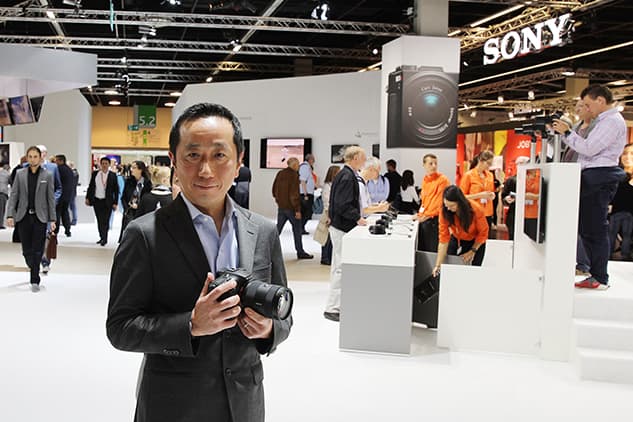Kimio Maki, senior general manager of Sony’s Digital Imaging Business Group, at Photokina
In an exclusive UK interview, Kimio Maki, senior general manager of Sony’s Digital Imaging Business Group, was asked about Sony’s plans over the next two years as the digital imaging market continues to contract.
In reply, Maki said that while the entry-level market is shrinking, areas such as professional and high-end hobbyist photography are growing.
‘Therefore, it is necessary to create value-added products,’ Maki told Amateur Photographer news editor Chris Cheesman at the Photokina show in Cologne, Germany.
‘We are going to focus on high-end camera systems rather than entry models.’
Asked about the current financial state of Sony’s imaging division – and whether it’s a good business to be in at the moment – Maki replied: ‘It’s getting better. Although the market is declining gradually, our business itself is expanding.’
Does the recently announced iPhone 7 (with a 12-million-pixel camera claimed to rival DSLRs) present any sort of threat to Sony? ‘The customer is different,’ said Maki. ‘The customer who uses a digital SLR or a 7S Mark II may also use an iPhone 7 – [but] as their mobile phone not as their camera system.’
Maki added: ‘Of course, I am using an iPhone, as well as a [Sony] Xperia and a 7S Mark II.’

Maki outlined three key ingredients customers demand from a Sony camera: resolution, sensitivity and speed.
But to combine all three in one model is ‘quite difficult’, so Sony must tailor its cameras to suit different customer needs.
For example, Maki continued, the Alpha 7R II is for photographers seeking high resolution, while the Alpha 7S II is aimed at those customers for whom sensitivity is a priority.
This week’s Photokina saw Sony commit itself to the A-mount system with the unveiling of the Alpha 99 II.
Maki confirmed that Sony will continue to create new camera systems for A-mount, telling AP he is confident there is sufficient demand.
He said most A-mount users hail from Japan and Europe, although he did not know how many exist worldwide.

Sony A99 II








